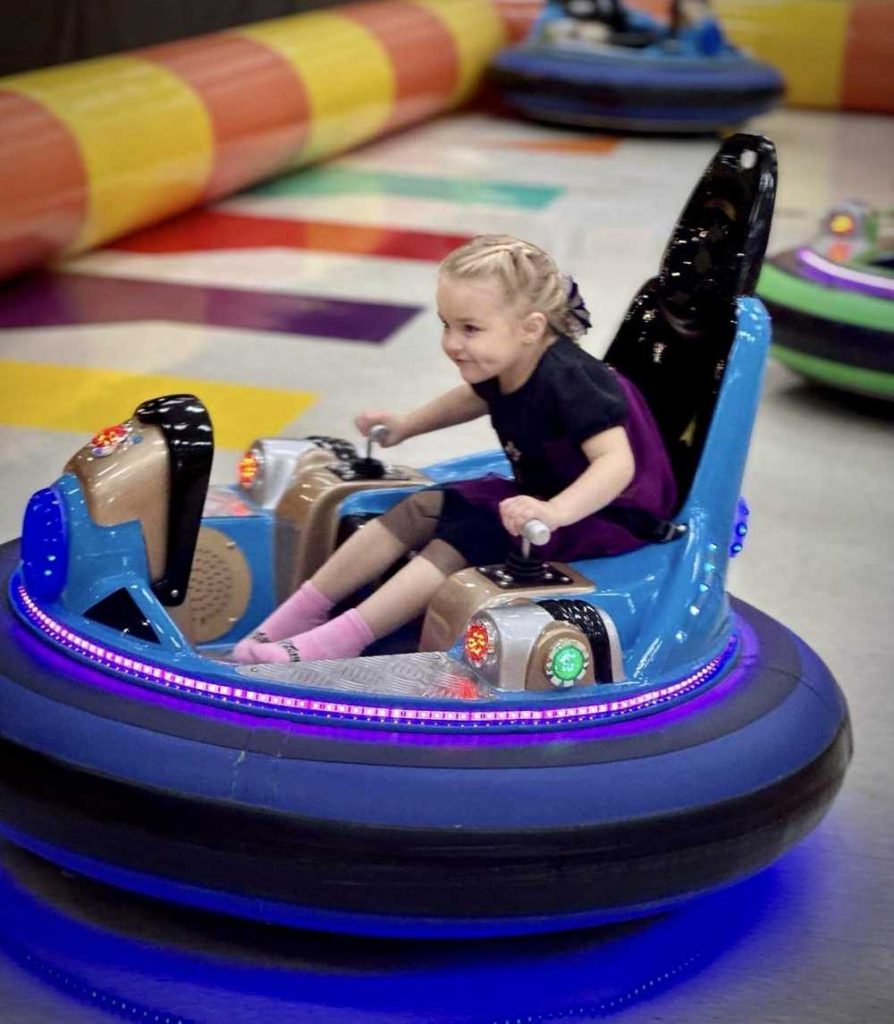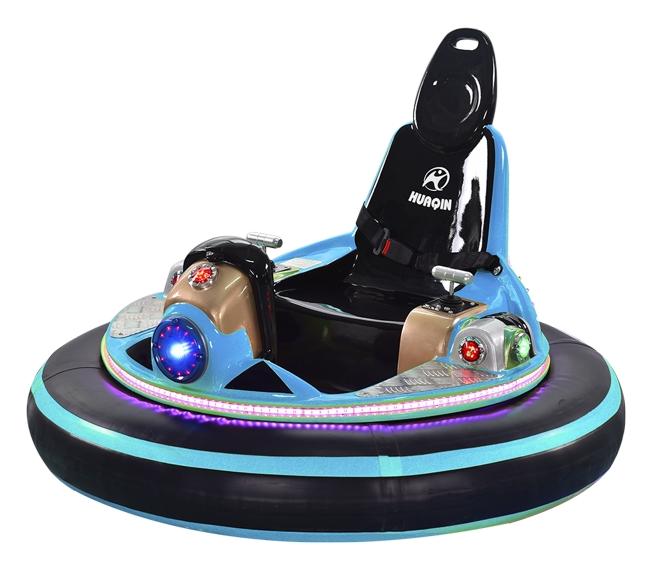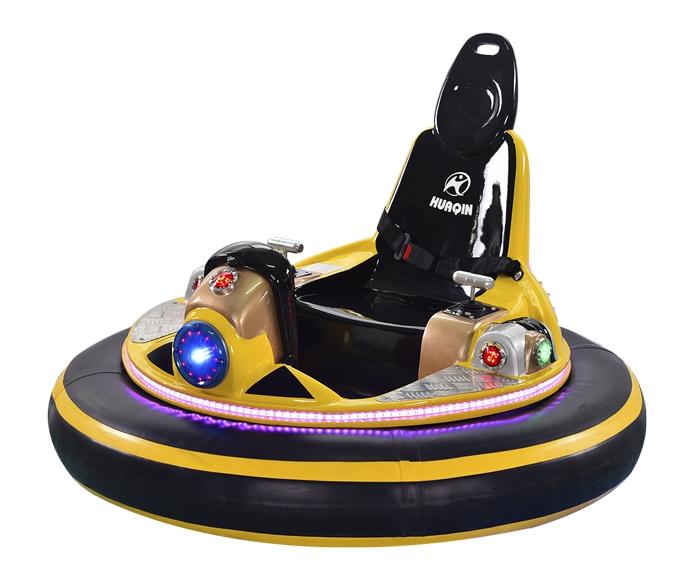Children’s bumper cars have become a staple attraction at amusement parks, shopping malls, and entertainment centers. Designed to offer a fun and exciting experience for children, these mini vehicles allow young riders to drive around in a safe, controlled environment. With bright, colorful designs often inspired by animals or cartoons, children’s bumper cars are an instant favorite among kids of all ages. In this article, we will explore what makes children’s bumper cars unique, how they function, and the different types available, along with important safety tips for parents and operators.
A children’s bumper car is a small, electrically powered vehicle designed for entertainment, particularly for kids. These cars are a staple in amusement parks, play zones, and shopping malls. Unlike adult bumper cars, most children’s versions don’t have traditional steering wheels but are equipped with easy-to-use control handles. They are often shaped like animals, cartoon characters, or decorated with vibrant designs to captivate young riders.
In a bumper car ride, children drive within a designated area, where they navigate and try to avoid collisions with other cars. These rides are extremely safe, and the minimum age requirement for participation is 18 months.
The age requirement for kid bumper cars
The minimum age requirement for children to ride bumper cars varies depending on the type of car. Most bumper cars are designed for children aged 1.5 to 7 years. Some models are specifically made for toddlers as young as 18 months, including electronic bumper cars suitable for kids aged 1.5 to 2 years. For younger children, especially those on the lower end of the age range, it is recommended that a guardian accompany them to ensure safety and provide assistance.
Table of Contents
- 1 Types of Children’s Bumper Cars and Their Differences
- 2 How to Ensure Children’s Bumper Car Safety
- 3 Do Children’s Bumper Cars Use Electricity?
- 4 What Is the Speed Range for Children’s Bumper Cars?
- 5 Control Mechanism of Children’s Bumper Cars
- 6 What Are the Safety Instructions for Children’s Bumper Cars?
- 7 Children’s Bumper Car Sizes
- 8 Area Requirements for Bumper Car Installation
- 9 Cost of Manufacturing Children’s Bumper Cars
- 10 Conclusion
Types of Children’s Bumper Cars and Their Differences
Children’s bumper cars come in various styles, each offering a unique experience. Some of the most popular types include:
- Fairground Bumper Cars: These can be powered by electricity, a battery, or an external power supply.
- Battery-Operated Bumper Cars: Operated via built-in batteries, these are low-maintenance and easy to manage.
- Dodgem Bumper Cars: These have a ground grid system that powers the car through electrodes connected to the ground.
- Electric Net Bumper Cars: These draw power from a ceiling grid and require more maintenance than other types.
While all bumper cars offer a fun experience, they differ in terms of price, maintenance, and comfort. For example, battery-operated cars are more affordable but may lack the comfort of electric net or fairground bumper cars, which often feature more comfortable seating.

How to Ensure Children’s Bumper Car Safety
Children’s bumper cars are generally considered one of the safest rides at amusement parks. However, some precautions should still be taken:
- Ensure safety belts are present in every car.
- The speed should be regulated by the ride operators.
- Children should be matched to cars that are appropriate for their size.
- Operators must ensure that riders are tall enough to reach the pedals and controls.
- Only fully functional bumper cars should be in use, and children should not exit the car until the ride has fully stopped.
Additionally, it is recommended that riders be under 52 inches tall for children’s bumper cars, and damaged cars with broken bumpers or missing seat belts should never be used.
Do Children’s Bumper Cars Use Electricity?
Yes, all children’s bumper cars are powered by electricity, whether through built-in batteries or connected grid systems. Cars using electricity from the ceiling are connected via a conductive rod, while others may have battery storage. Rest assured, the electricity used in bumper cars is safely contained within the system, making it harmless to riders.

What Is the Speed Range for Children’s Bumper Cars?
Children’s bumper cars typically have adjustable speeds. The maximum speed is around 4 km/h (1.1 m/s), while the minimum is about 1.5 mph. The average speed is approximately 2.5 mph. These speeds are specifically designed to provide a safe yet thrilling experience for young riders.
Control Mechanism of Children’s Bumper Cars
Children’s bumper cars are controlled by both the operator and the driver (the child). The child drives the car using a steering wheel and gas pedal, while the operator controls the overall ride settings, such as turning the cars on and off and adjusting speeds. The driver presses the gas pedal to accelerate and turns the wheel to steer, making it simple and fun to navigate the arena.

What Are the Safety Instructions for Children’s Bumper Cars?
To ensure the safety of children riding bumper cars, the following precautions should be taken:
- To avoid potential business losses, it’s essential to purchase bumper cars from a reliable manufacturer to ensure they function correctly and safely.
- The operator must start the car only after the child is securely seated.
- Ensure that all riders are properly wearing their seat belts before the ride begins.
- Underage children should not ride without adult supervision.
- The operator should confirm that both children and parents have read and understood the ride’s safety instructions.
- Eating and drinking should be strictly prohibited during the ride.
- Wet hands should never be used to operate the bumper cars.
- Bumper cars should not be submerged in water during cleaning.
- Inspect the bumper cars for any damage before each operation.
- Only a trained and skilled individual should oversee and manage the bumper cars.
- When the car’s battery is being charged, no riders should be allowed on the ride, and the arena must be closed.
Children’s Bumper Car Sizes
Children’s bumper cars come in different sizes, often categorized as mini, middle, large, and maxi. The size of the car is determined by two factors: the age of the child and the theme of the car. For example, mini bumper cars are for toddlers aged 1 to 2 years, while larger sizes may be themed after cartoon characters and designed for older children.

Area Requirements for Bumper Car Installation
A dedicated arena is required for children’s bumper car rides. This space should be large enough to accommodate multiple cars and leave room for children to move around safely. Specific entry dimensions, ceiling heights, and safety barriers should also be considered. The installation area must include a low-friction surface to allow cars to bump into each other without causing damage.
Cost of Manufacturing Children’s Bumper Cars
The cost of manufacturing children’s bumper cars varies depending on their size, design, and customization options. On average, a small indoor ride can cost around $10,000, while a set of 10 bumper cars may cost up to $15,000. For those looking to invest in bumper cars for amusement parks, a budget of around $30,000 is typical for a complete setup.

Conclusion
In conclusion, children’s bumper cars provide a delightful mix of entertainment and safety, making them one of the most popular rides for young children. With a variety of options available, from battery-operated models to electric grid systems, amusement park operators can choose the best fit for their venue and audience. By following safety guidelines and ensuring the proper maintenance of the cars, both operators and parents can guarantee a fun and worry-free experience for children. Whether it’s a birthday celebration or just a day out, children’s bumper cars continue to be a top attraction, delivering smiles and excitement for everyone involved.
